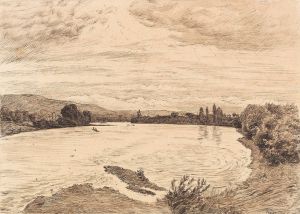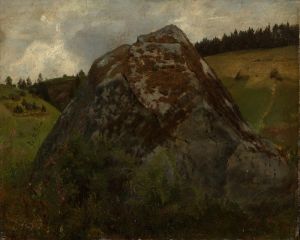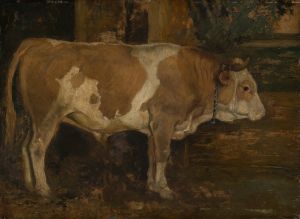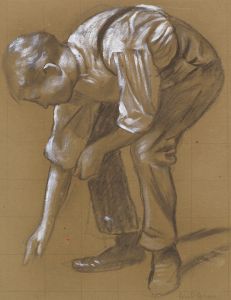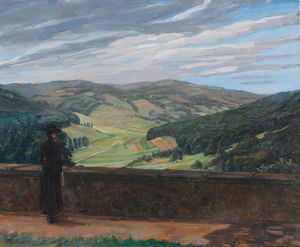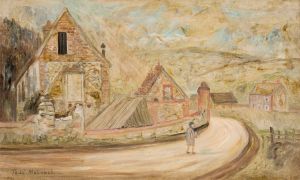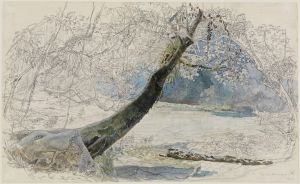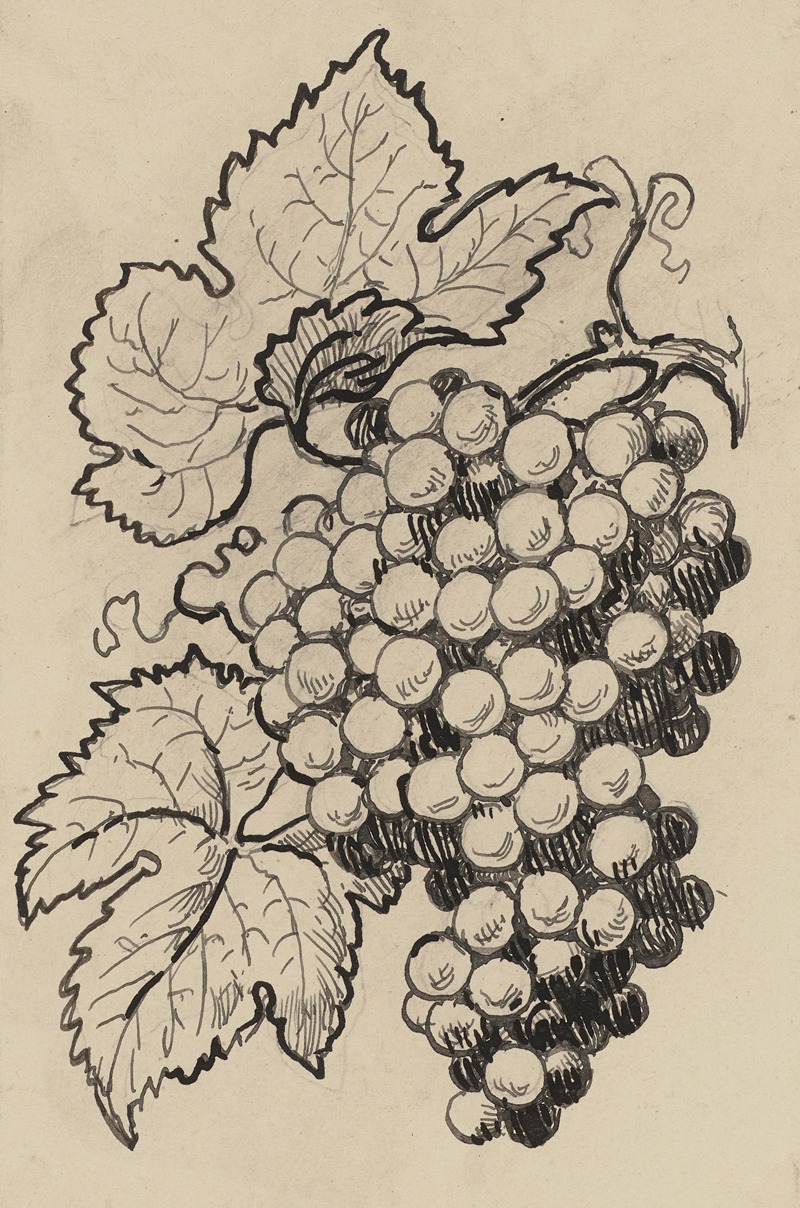
Traube
A hand-painted replica of Hans Thoma’s masterpiece Traube, meticulously crafted by professional artists to capture the true essence of the original. Each piece is created with museum-quality canvas and rare mineral pigments, carefully painted by experienced artists with delicate brushstrokes and rich, layered colors to perfectly recreate the texture of the original artwork. Unlike machine-printed reproductions, this hand-painted version brings the painting to life, infused with the artist’s emotions and skill in every stroke. Whether for personal collection or home decoration, it instantly elevates the artistic atmosphere of any space.
Hans Thoma (1839–1924) was a German painter associated with the Realist and Symbolist movements. One of his notable works, Traube (translated as Grapevine), reflects his deep connection to nature and his ability to depict it with meticulous detail and emotional resonance. The painting is a testament to Thoma's skill in capturing the beauty of the natural world, a recurring theme in his oeuvre.
Traube showcases a cluster of grapes hanging from a vine, rendered with remarkable precision and lifelike quality. The composition highlights Thoma's attention to detail, as he carefully portrays the texture of the grape skin, the delicate veins of the leaves, and the interplay of light and shadow. The work exemplifies his ability to elevate a simple subject into a piece of art that invites contemplation and appreciation of nature's beauty.
Hans Thoma was born in Bernau in the Black Forest region of Germany, an area known for its picturesque landscapes. This environment had a profound influence on his artistic vision, and many of his works reflect his admiration for the natural world. Thoma studied at the Karlsruhe Academy of Fine Arts and later spent time in Munich, Paris, and Italy, where he was exposed to various artistic styles and movements. Despite these influences, he developed a distinctive style that combined elements of Realism with a touch of Symbolism, often imbuing his works with a sense of serenity and timelessness.
While Traube is not as widely recognized as some of Thoma's larger and more ambitious works, it is representative of his ability to find beauty in everyday subjects. The painting aligns with the 19th-century Realist movement's emphasis on depicting ordinary life and nature with honesty and precision. At the same time, the almost meditative quality of the piece hints at the Symbolist inclination to explore deeper meanings and emotions through art.
Hans Thoma's works, including Traube, are celebrated for their technical skill and their ability to evoke a sense of harmony between humanity and nature. Today, his paintings can be found in various museums and collections, particularly in Germany, where he is regarded as an important figure in 19th-century art. The Hans Thoma Museum in Bernau is dedicated to his life and work, preserving his legacy and showcasing his contributions to the art world.
This concise overview of Traube and its creator provides insight into the painting's significance and the artistic context in which it was created.








